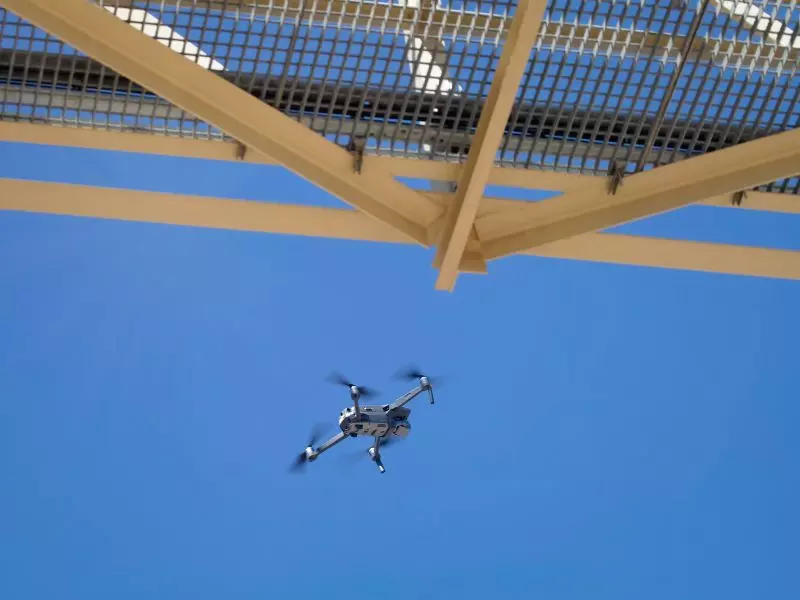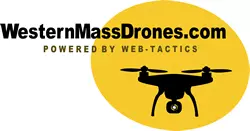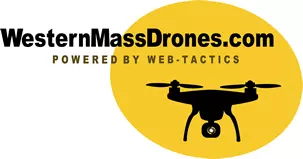What Constitutes a Large Infrastructure Project? A large infrastructure project typically refers to any large-scale project or natural asset that involves the construction, maintenance, or renovation of essential public facilities, transportation systems, or utility networks.

Some common examples of large infrastructure projects include:
- Highways and bridges
- Power plants and electrical grids
- Railways and mass transit systems
- Water and wastewater treatment facilities
- Oil and gas pipelines
These projects are typically characterized by their large scale, high cost, and significant impact on the public and the environment. They often require substantial resources, including labor, materials, and equipment. Due to their inherent size and complexity, they regularly require extensive maintenance and upkeep.
Part 1: Long Infrastructure
Long infrastructure projects, such as powerlines, energy pipelines, highways, and more, are ubiquitous in our daily lives and, for the most part, are taken for granted. Behind the scenes, however, these critical assets require a steady stream of inspections, maintenance, and upkeep to continue performing as expected. Herein lies the problem. Inspecting these projects is usually highly labor and resource intensive, with workers having to traverse hundreds (and sometimes thousands) of miles to inspect structures physically.
However, with the advancements in drone technology, inspections can now be conducted much more efficiently and effectively. In this blog post, we'll explore how drone inspections transform the inspection process of massive infrastructure projects that most cities grapple with regularly.
How Drones are Revolutionizing Long Infrastructure Inspections
Drone Powerline Inspections
According to the Energy Information Administration (EIA), as of 2020, the total length of transmission lines in the United States was approximately 380,000 miles. However, this only includes high-voltage transmission lines and does not consider lower-voltage distribution lines responsible for delivering electricity to individual customers. For power companies, inspecting these assets would traditionally require thousands of manhours, costly equipment, and workers physically climbing poles or using aerial lift equipment, which can be dangerous and time-consuming. With drones, though, reviews can be done remotely without requiring workers to access high-voltage powerlines physically. The high-resolution cameras and other sensing equipment that drones come equipped with can easily access hard-to-reach areas and gather valuable data for inspection and maintenance purposes.
Drone Pipeline Inspections
Oil & gas pipelines are assets of national importance as they cover vast distances, often running through challenging terrains and remote locations to delivery energy to communities and cities all across the country. Traditionally, these pipelines have been inspected by workers on foot or with ground vehicles, which can be slow and labor-intensive. With the use of drones, inspections of oil & gas pipelines can be performed quickly, safely and with greater accuracy. Drones equipped with high-resolution cameras, thermal imaging, and other sensing equipment can fly over pipelines, collecting data and providing a clear overview of the pipeline's condition. This helps to identify potential problems and take corrective action before they lead to significant issues, reducing the risk of pipeline leaks and spills.
Drone Agriculture Property Fencing Inspections
The average farm size in the United States varies depending on the type of farming operation and the region in which it is located. According to the USDA National Agricultural Statistics Service, as of 2021, the average size of farms in the United States is approximately 441 acres. However, this average masks significant regional and operational differences. For example, farms in the Northeast are smaller on average, while those in the Midwest tend to be larger. Additionally, the average size of a farm can vary depending on the type of farming operation, with specialty crop and dairy farms tending to be smaller on average, while livestock and grain farms tend to be larger.
The inspection of farm property fencing and barriers is critical for maintaining the security and integrity of the property and the assets within. Traditional methods of inspection can be slow and resource-intensive, requiring workers to physically access the entire length of the fencing or barriers, which, even with a vehicle is hours if not days’ worth of travel and work. Drones make the inspection process much more efficient and effective. Equipped with high-resolution cameras and other sensing equipment, they can fly over large properties, capturing detailed images and data that can be used to assess the condition of fencing and barriers.
Drone Railroad Tracks Inspections
The total length of railroad tracks in the United States is approximately 140,000 miles. This figure includes both freight and passenger rail lines, as well as both standard gauge and narrow gauge tracks. The rail network in the United States is extensive and serves as a critical transportation infrastructure for the country. The rail system is used to transport a variety of goods, including coal, grain, and consumer goods, as well as to provide passenger transportation in some areas.
For train companies, the traditional methods of inspection can be slow and dangerous, requiring workers to physically access the tracks and inspect them by hand. With the use of drones, the inspection process becomes much more efficient and effective. Drones equipped with high-resolution cameras and other sensing equipment can fly over the tracks and stations, capturing detailed images and data that can be used to assess their condition, identify any issues such as tracks needing replacement, track deformities, worn out rail joints, or other problems that can lead to train derailments.
Drone Forests Surveys
Approximately 33% of the land area in the United States is covered in forests. This figure includes both public and private forest lands, as well as forests in urban and rural areas. Forests play a vital role in the US, providing significant ecological and economic benefits, including carbon sequestration, habitat for wildlife, recreation opportunities, and timber production.
The inspection of forests and public parks is essential for ensuring the health and safety of these areas. Traditional methods of examination can be slow and labor-intensive, requiring workers to physically cover & inspect the entire area either on foot or with the use of small off-road vehicles. With the help of drones however, the inspection process becomes much more efficient and effective. Drones equipped with high-resolution cameras and other sensing equipment can fly over large areas, capturing detailed images and data that can be used to assess the health of the forests and public parks. This helps to identify any potential issues such as disease outbreaks, wildfires, or illegal logging, enabling forest department rangers to take action before anything untoward occurs.
Drone Highways & Road Inspections
The highway network in the United States is extensive and covers a vast area of the country. According to the Federal Highway Administration, as of 2021, the National Highway System (NHS) in the United States consists of approximately 160,000 miles of roadway. The NHS is a network of highways that are considered to be essential to the nation's economy, defense, and mobility, and includes a mix of rural and urban roadways, as well as interstates, freeways, and other major roads. In addition to the NHS, the United States has a vast network of other roads and highways, including local roads, state highways, and toll roads, which, when combined, total approximately 4 million miles of roadway. The US highway network serves as a critical infrastructure that supports the country's transportation needs and connects people, goods, and services to markets and destinations across the country.
The inspection of highways is critical for ensuring the safety and efficiency of roadways. Less than 30 years ago, inspections would be slow and labor-intensive, requiring workers to physically drive the entire length of the highway, identifying any potential issues such as potholes, cracks, or other hazards that can lead to accidents. With the use of drones, the inspection process becomes much more efficient and effective. Drones equipped with high-resolution cameras and other sensing equipment can quickly fly over large stretches of highway, capturing detailed images and data that can be used to assess their condition.
Drone Inspections of Canals & Waterways
The examination of canals and waterways is crucial for maintaining their stability and smooth functioning. Conventional inspection methods can be slow and strenuous, as they require personnel to physically examine the entire length of the canal or waterway. With drones, however, the inspection process becomes significantly more efficient and precise. These aerial devices, equipped with high-resolution cameras and other monitoring tools, can quickly survey extensive sections of a canal or waterway, providing comprehensive images and information for evaluation. This enables early detection of problems such as leaks, cracks, or erosion that could result in structural breakdown or operational difficulties.
Part 2: Large Infrastructure
Dam Inspections by Drone
Some of the most famous dams in Massachusetts include the Quabbin Reservoir Dam, Wachusett Dam, and Saxonville Dam. Since many large, modern dams can easily tower over 200 feet, manual inspections are incredibly challenging and potentially dangerous, with risks including working at height, fast-moving water, and hazardous materials. These days, in counties where dams provide water and power to the community, city officials are using drones to make the inspection process more efficient and safer. Equipped with high-resolution cameras and other sensing equipment, the drones can fly close to the superstructure, capturing ultra-high-quality images and data that comprehensively assess its condition, all the while eliminating the need for workers to physically dangle down the side of the dam and remain there for long periods to assess the structure properly.
Drone Radio Tower Inspections
The average height of radio towers in the US can vary greatly, depending on the type of tower and the purpose it serves. Some radio towers can be as short as 30-50 feet, while others can reach heights over 2000 feet. The exact size of a radio tower depends on factors such as the required coverage area, the surrounding terrain, and the frequency of the radio signals being transmitted. But, given how important it is to have a strong signal for commercial, industrial, and emergency purposes, inspecting radio towers is crucial for ensuring their stability and longevity. Traditional inspection methods are slow and dangerous, requiring workers to climb the tower to perform a manual inspection. However, drones make the inspection process more efficient and safer. Equipped with high-resolution cameras and other sensing equipment, drones can fly around the tower, capturing images and data that comprehensively assess its condition. They identify potential issues such as corrosion, structural weakness, or damage, reducing the risk of tower failure and improving overall safety.
Drone Wind Turbine Inspections
In Massachusetts, wind energy is becoming increasingly popular. The state has set ambitious goals for renewable energy, including a target of 3,200 MW of installed wind capacity by 2025. To achieve these goals, state officials have implemented several initiatives to encourage wind energy development, including the Massachusetts Renewable Portfolio Standard, which requires that a certain percentage of the state's electricity come from renewable sources. As a result of the push towards a cleaner and greener state, several wind energy projects are underway in Massachusetts, including the construction of large-scale wind farms and the deployment of smaller-scale wind turbines on commercial and residential properties. From an inspection standpoint, this translates to a near-constant need to inspect wind turbines regularly to ensure their safe and efficient operation.
Traditional inspection methods can be time-consuming, dangerous, and require heavy equipment and specialized personnel. On the other hand, drone inspections can make the process much more efficient and safer. Drones equipped with high-resolution cameras and other sensing equipment can easily access areas of wind turbines that are difficult to reach, such as the tips of the blades and down the entire length of the shaft. This ability to get to hard-to-reach places helps to identify any potential issues, such as cracks, corrosion, or damage to blades, which can cause inefficiencies or safety hazards.
Grain Silo Inspection by Drone
When people usually talk about Drones in Agriculture, they refer to drones being used to inspect fields of crops, spray fertilizer, or deliver parts to farm machinery when something's gone wrong. While all reasonable uses of drones in agriculture, one inspection use is often overlooked and easily one of a farm's most hazardous tasks: inspecting grain silos. Grain silos vary in height, depending on their intended use and storage capacity. Still, on average, they can range from 30 to 120 feet tall, with some industrial silos reaching up to 200 feet or more.
While the size of a grain silo is determined by several factors, including the amount of grain it needs to store, the height of surrounding structures, and the method of filling and unloading the grain, the task of inspecting grain silos can be dangerous, as they often have limited access points and can be very tall. Checking the interior and exterior of silos requires specialized equipment and training to ensure the safety of workers. However, drones equipped with high-resolution cameras and other sensing equipment can significantly reduce the risk to workers, as they can quickly fly around and inside the silo to inspect it, capturing detailed images and data that can be used to assess its condition.
Smoke Stack & Chimney Inspection by Drone
The manufacturing sector in Massachusetts continues to play a significant role in the state's economy. According to data from 2021, the industry employed over 250,000 workers and contributed over $21 billion to the state's GDP. The state is home to various industries, including electronics, biotechnology, pharmaceuticals, and advanced manufacturing. For drone companies like Western Mass Drones, this emphasis on manufacturing translates into a real-world need for inspecting factory infrastructure and, in the vein of this article specifically, towering industrial smokestacks and chimneys.
The average height of a smoke stack varies and can range anywhere from several meters to hundreds of meters, depending on the size and type of facility it is associated with. Factors such as the volume of emissions generated, local regulations, and environmental conditions can influence the height of a smoke stack. Still, the fact remains that inspections require a lot of specialized equipment, highly-trained manpower, and a lot of time and effort. Drones can simplify the entire process by enabling a small team of a Drone Pilot, Spotter, and Inspector to fly close, capture detailed images and video, and survey more in a shorter period of time.
Conclusion
Drones are but one of the many new technologies that are designed to make the once tedious inspection process easier, more affordable, faster, and safer. By eliminating the need for putting employees in harm’s way, drone inspections are revolutionizing the way city governments and utility providers are ensuring the safety and upkeep of their investment.

